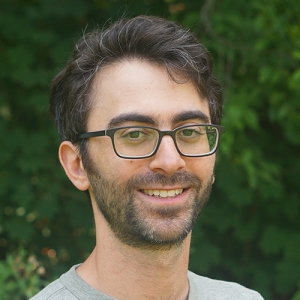“Groundwater provides drinking water to over 2 billion people; supplies nearly half of the irrigation water used globally to grow our crops, and sustains surface water bodies and groundwater-dependent ecosystems,” Mason Stahl said. “But because groundwater is largely out of sight, people often don’t realize how important it is and how threatened it is by overuse and contamination.”
To better understand groundwater and its recharge process, and to better protect and manage it, Stahl’s research focuses on two key questions.
- How does water become groundwater? Where does this water come from and when did it become groundwater? (Stahl is working with Jaclyn Gehring ’20, Yusuf Jameel of MIT, and Union geology professor John Garver on studies related to this question.)
Consider this example from Stahl.
The water in a household well might recharge (refill) locally or the water might come from mountains hundreds of miles away. In terms of when the well might recharge during the spring thaw, or the water filling it today might have arrived thousands of years ago during a very different climate. And as for how, that might be during strong rainstorms or from river water seeping into the aquifer.
“Knowing where, when, and how groundwater recharges is important to understanding the sustainability of our groundwater resources,” Stahl said. “And to understanding how the quantity and quality of this resource might be impacted by climate and environmental change.
Which segues to Stahl’s second key area of study.
- Arsenic contamination in groundwater is relatively common. How does this happen?
“High levels of groundwater arsenic pose a health risk to more than 150 million individuals across the world. While it’s most severe in Asia, more than 2 million Americans are estimated to be exposed to groundwater arsenic above EPA guidelines,” Stahl said. “In many cases, high levels of arsenic are naturally occurring and are not the direct result of human activities. However, human activities can influence the process of releasing arsenic.”
Naturally occurring arsenic is very sensitive to levels of oxygen or organic matter (like plant material and animal or human waste) in saturated soil, Stahl explained. Changes in the environment caused by human disruptions to the ground – such as flooding fields for irrigation or constructing ponds – can alter the geochemical conditions and cause arsenic to leach out of soil and rocks and into groundwater.
Together with colleagues Beck DeYoung ’21 and Ben Bostick and Craig Connolly (both of Columbia University), Stahl is studying how flooding patterns and surface water bodies (like ponds) might contribute to contamination.
A recent National Science Foundation Major Research Instrumentation Grant supports research on both questions. The funds will allow purchase of a cavity ring-down spectrometer, which measures isotopes of hydrogen and oxygen in water.
“By analyzing the isotopes in groundwater you can learn about the water’s source,” Stahl said. “You can track the where, when and how of groundwater recharge and the way groundwater moves through arsenic-affected aquifers. This is critical to understanding the conditions that drive arsenic release.”
Stahl is the principal investigator on the grant. Co-investigators are Holli Frey, professor and chair of geology; David Gillikin, professor of geology and director of environmental science and engineering; Donald Rodbell, professor of geology; and Anouk Verheyden-Gillikin, geology lecturer and stable isotope laboratory manager.

